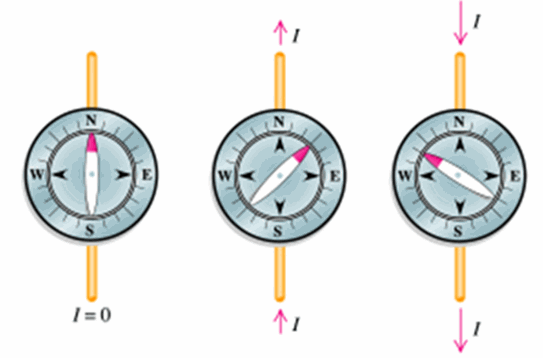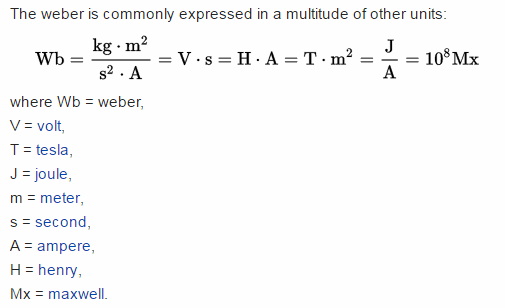


Experiments with magnets and our surroundings
Twelve Fundamentals of Magnetism
2. Magnetic Flux, Φ [weber, Wb]
a. Links for this topic
b. What is it?
When current flows in a wire, a magnetic field (magnetic flux) is produced around the wire. This was first noticed by Orsted in 1820 when he had a wire, connected to a battery, near a compass. When current would flow in the wire in one direction, the compass needle would rotate perpendicular to the wire in one orientation. When he reversed the direction of the current, the compass needle would reverse its orientation.

c. Its unit
This unit for
magnetic flux density is the weber, abbreviated as Wb. In equations, it
is often shown as the capital Greek letter phi, Φ.

d. Direction of the field
The direction of the magnetic field around the wire can be determined by the Right Hand Rule (RHR). The thumb of the right hand points in the direction of the conventional current flow, and the fingers of the right hand wrap around the wire, pointing in the direction of the magnetic flux.

The flux density around the wire carrying current is:
e. Extent of the field
The magnetic field exists everywhere between the magnetic field lines. A common misconception is that the field only exists where there is a line drawn. This is not true. The field is more like a smear than a line. Again, the lines are used to help illustrate the direction and path of the magnetic field, not its location. When the lines are drawn closer to each other, the strength of the field is greater. When the lines are spaced farther apart, the strength of the field is less.

f. Shape of the field
The magnetic field associated with a few different shapes of magnets are shown here. Please note how each field line loop can be traced and each is a closed path so that you always end where you started.



